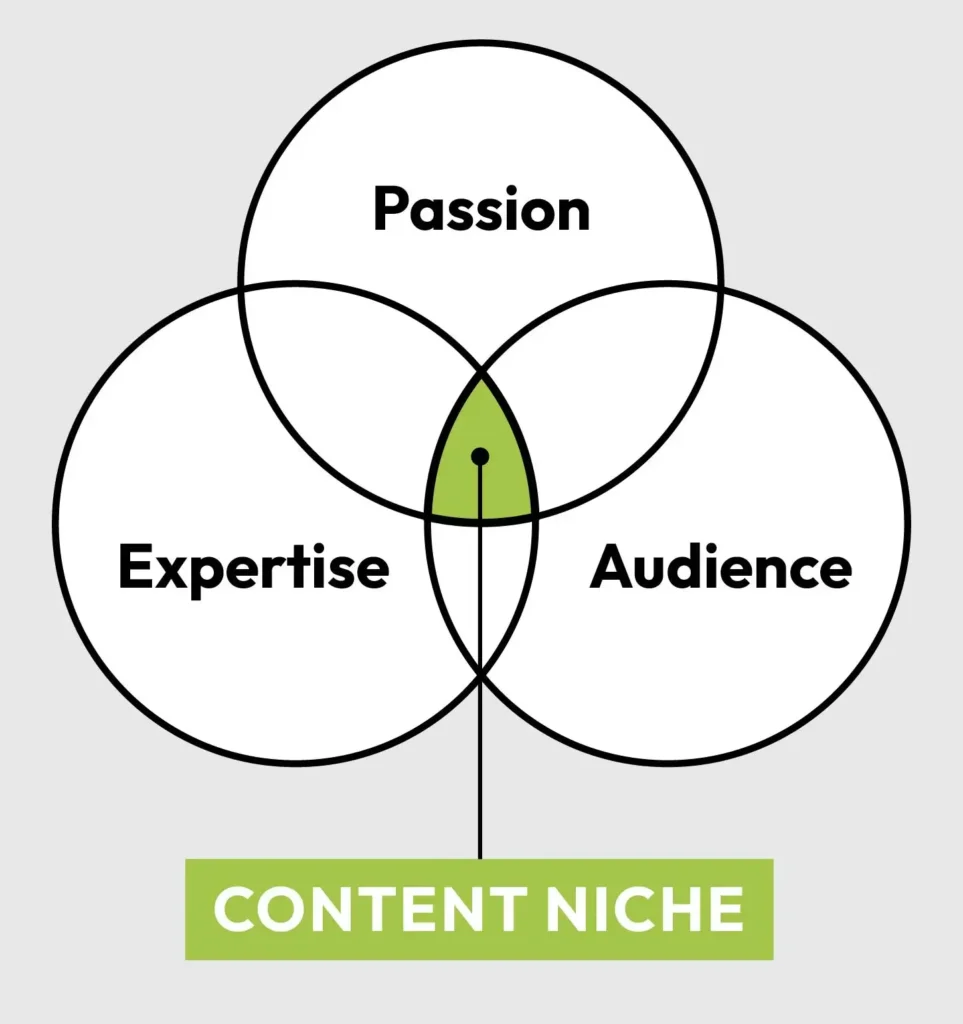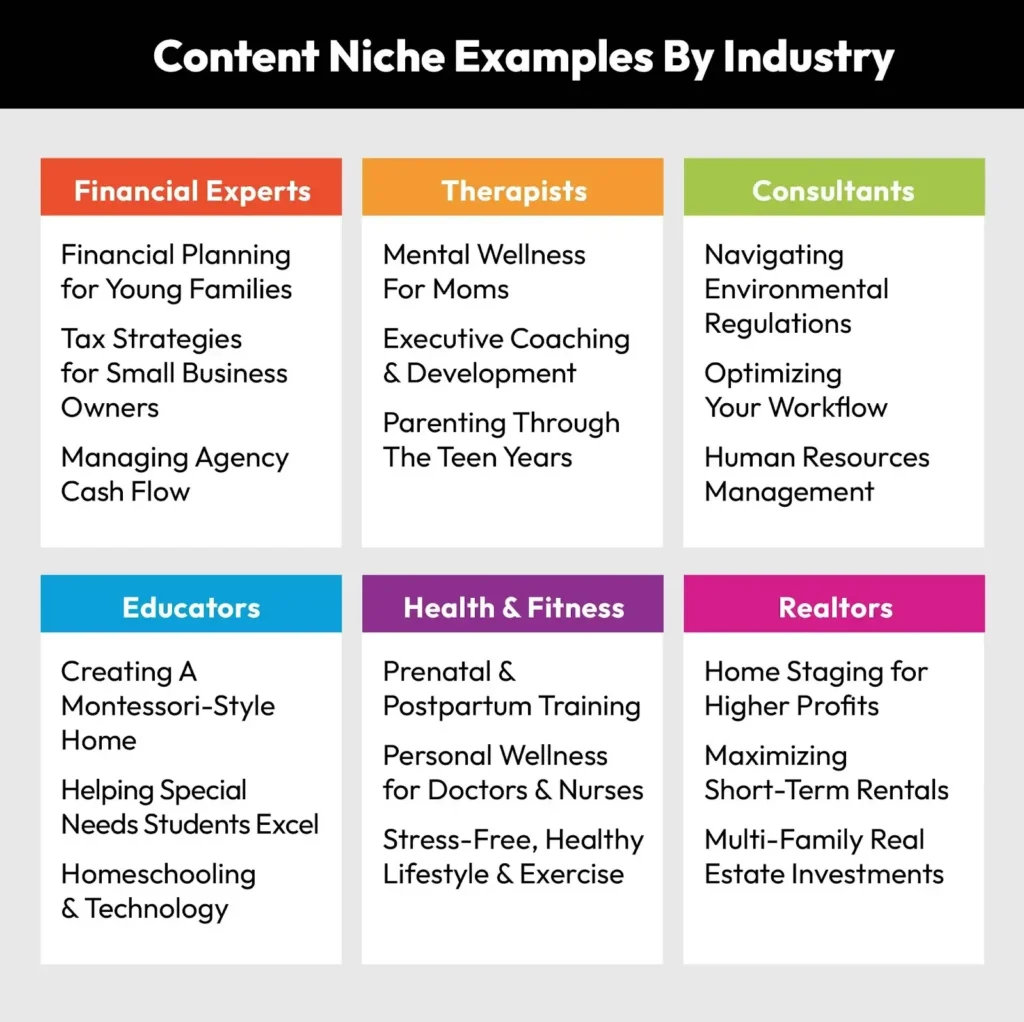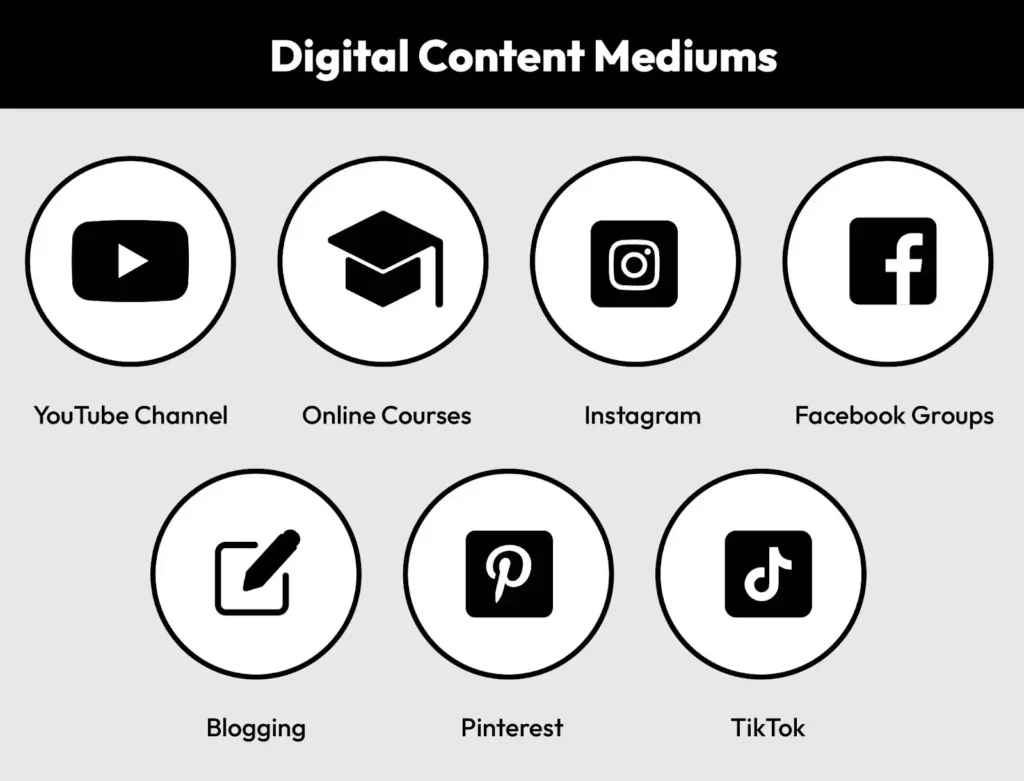- Create
- Market
- Scale
create
market
Choose Your Core Digital Content Medium
The life of a content creator promises the freedom to pursue your passions, have more control over your life, and earn a living with passive income. In today’s creator economy, entrepreneurs use content marketing to develop a personal brand, sell products and services, and expand their influence to reach a global audience. As it becomes easier to access technology and connect with creative experts, more and more people are learning how to be successful at creating and distributing high quality content. Instead of being trapped in linear career paths, today it is more possible than ever for a coach, accountant, chef, or teacher to become a full-time content creator.
To help you with your journey, we’ve put together five steps you can take to become a successful content creator:
The most important decision you’ll make for your content creation brand is which topic or niche to focus on. At first glance, this may appear to be the easiest step; however, audience competition is fierce. Chances are, the online world is saturated with content in your chosen field. To achieve long-term profits as a content creator, you must first rise above the noise and build an audience. It’s critical that you identify a specific niche within your market where you can stand out. It’s not enough to produce general content about your area of expertise; you need to connect with your audience in a unique way.

To determine exactly what your niche should be, ask yourself these three questions:
Here are some examples of ways this might take form:

Behind the best content creators is a strategic plan that helps them produce consistent, relevant content. Content creation is both an art and a science; search engines demand both frequency and quality in order to surface your content. Planning is key to ensuring that your content will work for you.
The key to a successful content strategy is understanding your goals. How do you envision your life in one year, three years, or ten years? Is content creation a side gig to earn extra income? Or do you want to build a brand that can sustain you for the next few decades? The size of your goal will have a big impact on the speed of your content output, how many platforms you employ early on, and how much time and money you must invest to get started.
For example, with a passion project that you will eventually monetize in 3-5 years, you might gradually hone your voice and master a single platform before expanding to add more. Growth is slower, but not as expensive or time-intensive.
However, if you want to transition out of your current job and make content creation your full time business in the next 24 months, you’ll need intensive effort. Expect to invest a lot more time and money to monetize your content products more quickly.
A content calendar is a critical part of any content creator’s strategy. A calendar allows you to work more productively, so you don’t have to be “always on” in order to keep your content machine running. When you research trending topics and decide which to focus on weeks or months in advance, you have more time to create high-quality content. Use platforms like Hootsuite to queue up and schedule social media posts ahead of time so they post automatically at the most optimal times.
Not every piece of content has to be a long-form blog or professionally-produced video content either. In fact, research shows that demand for microlearning—the consumption of quick, insightful content— is higher than ever in 2023. Short, expert lessons are a critical component of growing your brand and building a loyal audience.
Once you’ve chosen a niche and a strategy for developing your content, it’s time to decide on the type of content you’ll create. When you’re starting out as a content creator your resources and time are probably limited. However, your target audience will spend the majority of its time on one or two channels, so that is where you should focus.

Start by researching the platforms and types of content your audience consumes the most. For example, if chefs and home cooks are most active on YouTube, then creating YouTube videos will provide the most exposure. If you’re selling professional services and targeting business executives, then you might start a podcast or invest time in LinkedIn. Yoga instructors or dieticians often find the most engagement on social media platforms.
Another factor to consider is your own skill set. Many content creators excel at SEO or copywriting. Experienced social media content creators often use video to build a following on TikTok or Facebook. The most important thing is to choose a platform you enjoy that’s also where your audience spends its time.
As a content creator, you are your brand. Your followers will listen to you because they value your expertise. As instructional designer Alex Cartmill says, “The greatest marketing advantage you have, and will always have, is that there’s only one of you.” However, that doesn’t mean every task must be completed by you.

Consider your strengths, and which tasks are core to your brand. If a task is time-consuming, distracts from your core business activities, or you lack the necessary expertise or resources to do it effectively, it’s a good candidate for outsourcing. Are there non-core tasks that you can outsource such as graphic design, editing, or social media management?
For example, you may write blog articles, but hire a content writer to edit and improve the copy, or a graphic designer to create infographics and social media content to promote the pieces. Or perhaps you’re great on camera and record insightful clips throughout the day, but a social media manager helps you turn them into dynamic Instagram reels. For teachers, an online course consultant can optimize your expert content for the best student experience.
Outsourcing tasks to specialized professionals results in superior quality work and frees up your time to focus on the things you do best. Five years down the road, you’ll look back at some of your original content and marvel at how far you’ve come. However, a commitment to high-quality content from the start goes a long way toward helping you rise to the top in a competitive field.
As your content improves and you grow a captive audience, the next step is to monetize what you’ve built. Surprisingly, an elaborate website, enormous Instagram following, or extensive email list is not a prerequisite for success. All that’s required is a loyal group of followers who have faith in your expertise because you’ve provided them with compelling content.
There are many ways to make money as a content creator, and pricing on information products varies widely. You control the content and the pricing. Start monetizing by repurposing your content into different formats so you can use it on new platforms. Start with content products that are a natural fit for your skill set, platform, and audience; then add more assets over time.
Here are just some of the possibilities:
Once the product is proven, the message is honed, and the production process is flowing, it’s time to turn your attention to scaling your brand. As income grows, most content creators seek additional outlets to multiply their brand’s reach. This is an ongoing process that has several components:
While all of these outlets may not be a fit for you, innovating and reinvesting in your business will lead to continued growth for your brand.
You are passionate about your area of expertise and want to use that passion to help others—that’s why becoming a content creator may be a great fit for you! Be sure to take the necessary steps to identify your unique niche and develop a strategy that will enable you to reach your intended audience. Expect to spend the first few years creating a content brand focused on finding the right fit between product and market, fine-tuning the content product, and building the foundational audience that will launch your brand into exponential growth.
This blog is brought to you by Kartra, the all-in-one online business platform that gives you every essential marketing and sales tool you need to grow your business profitably – from sales pages and product carts to membership sites, help desks, affiliate management and more. To learn how you can quickly and easily leverage Kartra to boost your bottom-line, please visit kartra.com.